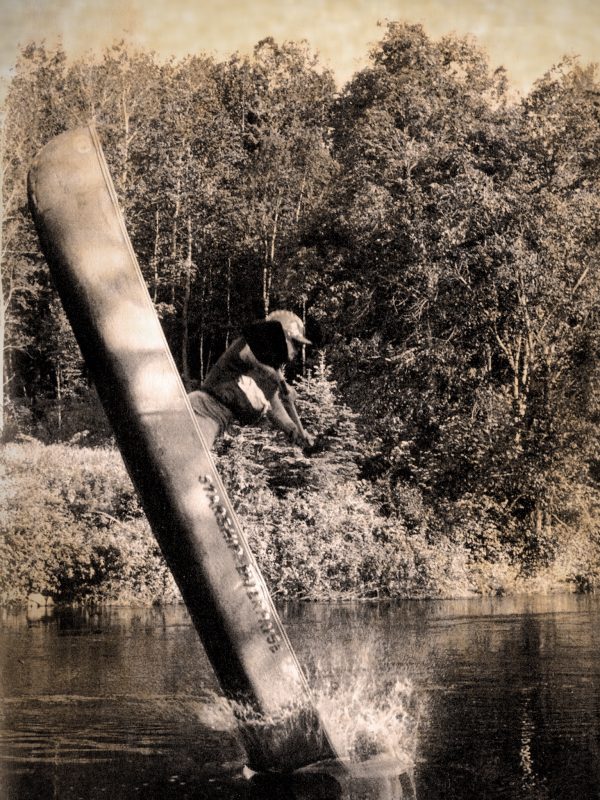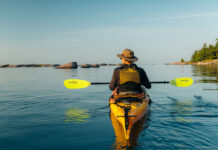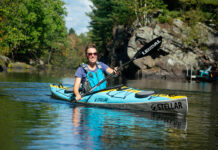Some whitewater canoe designs appear to be timeless.
I remember the excitement when another canoe instructor, Curtis Berryman, and I pooled our resources to buy an old Mad River Explorer canoe. At that time, it was the boat of choice for local whitewater canoe trips as well as introducing newcomers to whitewater.
Affectionally nicknamed the Starship Enterprise, its stable, moderate V hull helped us scrap through a number of misadventures as we pushed our version of the sport of whitewater canoeing. We accomplished, sort of, our first tandem enders in the Starship. A less than joyful experience for the bow paddler since the length of the canoe meant the bow would hit bottom, thus pinning the bow paddler to the bottom of the canoe until we resurfaced again.
The Starship was our craft for our first attempt at boofing. Mark Scriver and I launched Curtis off a bridge, from the top of our car, in the Starship. Rest assured, the car wasn’t moving. We’re not crazy!

Eventually, my father, Bill Mason, arrived home with the first solo whitewater playboat any of us had seen. Nolan Whitewall’s radically short 14-foot Descender. The Starship was relegated to a tandem-only boat. Over time, its bent gunwales and 100-pound patched hull resulted in it spending more and more time in the old canoe pile.
Almost 20 years later, I needed one more canoe for a tandem canoe course. Out came the Starship. A little vinegar, acetone and soap cleaned off most of the moss from the hull. Fresh knee pads to replace the squirrel-chewed ones, some airbags and it was ready for the mission.
With our new approach to using the MITH technique (momentum, initiate, tilt, hold), the emphasis is on maintaining tilt while carving turns. The crew in the Starship kept losing their carve, after employing my best coaching techniques… to no effect. I hopped in and tried it.
Gee, I’d like more tilt for this demo, but I can’t make it tilt farther, I thought to myself. It must be because it’s so heavy.
The next time I was out, my daughter, Willa, was with me. An experienced instructor herself, she couldn’t make it carve very well either. We concluded the V-hull, which feels so reassuring and covered up many of our errors in the old days, was now preventing the boat from carving. Tilting resulted in the canoe riding on the flat side of the V. No carve at all!
We know the way to stop carving is to flatten your boat on the water—which is to say, no tilt. That’s exactly what was happening.
Whitewater canoe technique has changed, and the demands of our craft have too. Make sure your choice of canoe is enhancing your experience, not sabotaging it.
Paul Mason’s list of canoe courses for 2020 is available at www.canoeinstruction.co.









